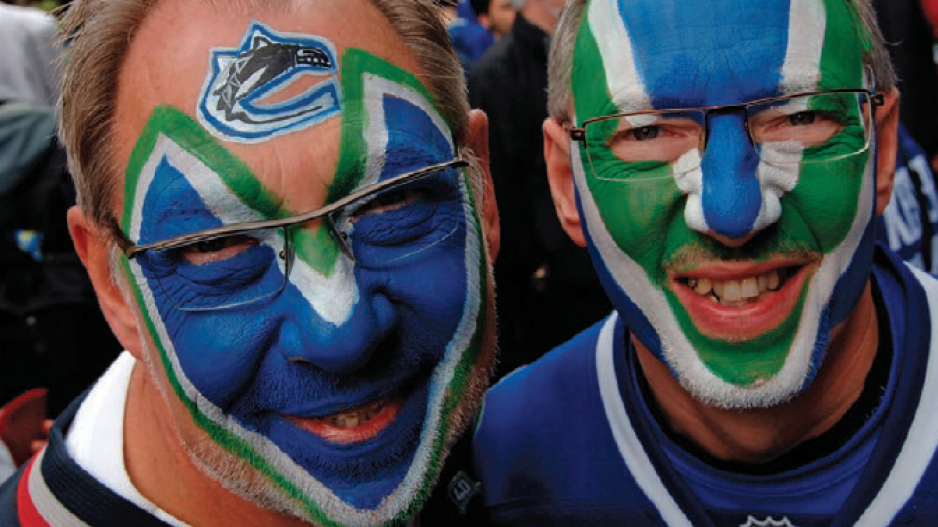Softening ticket demand, increasingly sophisticated electronic viewing options and a Canadian dollar losing ground against its U.S. counterpart are proving to be tough competition for local professional sports teams.
Among the first victims of that 2014 economic reality: the Vancouver Canucks’ lengthy run of sold-out games, which, according to the team, officially ended on October 18 when the Tampa Bay Lightning visited Rogers Arena.
Until then, the Canucks had claimed a 474-game run of sellouts that stretched back 12 years.
Announced attendance at the Tampa Bay game was 18,647 – 223 shy of capacity. But the Canucks’ sellout streak might really have ended March 15, 2007, when 18,325 tickets were scanned and the arena capacity was 18,630, according to data contained in a City of Vancouver Olympic transportation planning study.
The Canucks are now scrambling to get back on the sellout trail. Among the team’s 2014 marketing strategies: three- and five-game ticket packages.
“They realize that there is a problem, we as consumers know there’s a problem when they’re offering five-game packs,” said Vancouver Ticket and Tour Service’s Kingsley Bailey. “It’s telling you they’ll take whatever they can. They had to go as long as they could [with the sellout streak] to have the fans believe there was a lot of interest.”
The privately owned team keeps financial information close to the vest and chief operating officer Victor de Bonis was not available for an interview. Bailey estimates three in 10 season ticket holders didn’t renew after the club missed the playoffs last season, while others opted for smaller subscriptions in cheaper seating categories.
“They saw that there was value still in having season tickets,” Bailey said, “but not value paying for those horrendous prices in the lower bowl.”
Team Marketing Report’s 2013 survey found Canucks tickets were the third most expensive in the National Hockey League at an $87.38 average price, substantially higher than the NHL’s $61.01 average. Four average tickets, a beer, soft drink, hot dog, program and cap are a steep $460.73 in Canada’s most expensive city.
PwC’s October-released “At the Gate and Beyond” pinpointed competition and “price pressure” as challenges in the sports market through 2018.
According to the report, “shifts in market conditions and fan preferences are prompting the right-sizing and repositioning of seat inventory and more informed and dynamic pricing models to enhance yield and reduce excess capacity through new seat concepts, price structures and amenity packages.”
Langara College School of Management’s Aziz Rajwani said watching live sports on HD TV at home or in a pub is an attractive cost-saving measure.
“You have cannibalization effects going on; people are saying, ‘Why am I paying such a high amount to go to a game?’” Rajwani said.
He said teams need to improve the in-game experience for fans, freeze ticket prices, include food and beverage with premium tickets or sell family-priced packages.
Late last season, the Canucks marketed packs of four tickets at a discount that included free admission to the FlyOver Canada exhibit at Canada Place and 10% off merchandise at the Canucks Team Store.
This year, the team is marketing a Cineplex Family Pack, with four tickets to a game and to a movie and tubs of popcorn, beginning at $40 a ticket. Specials like these were unheard of four years ago when the Canucks were dominating the NHL.
Another cost challenge facing teams is the declining Canadian dollar, which has fallen by $0.10 against the U.S. dollar in the past year and was trading at US$0.89 at press time. A parliamentary subcommittee in 1998 was told that 80% of a Canadian team’s revenue was in Canadian dollars, but 80% of expenses, mainly player payroll and travel, were in U.S. dollars.
The same committee heard that every $0.01 decline in the exchange rate hiked Toronto Blue Jays expenses by $600,000 a year.
“[The dollar] was at its nadir in January 2002 at US$0.62,” Rajwani said. “Most businesses would tend to not want to take the foreign exchange risk and accordingly they would enter into a forward or futures contract. They may already have done that when they saw that dipping.”
Teams also have more comfort with shares of Rogers’ $5.2 billion, 12-year media rights deal. At an average $433 million a year, it’s more than four times CBC’s estimated $100 million a year. •




